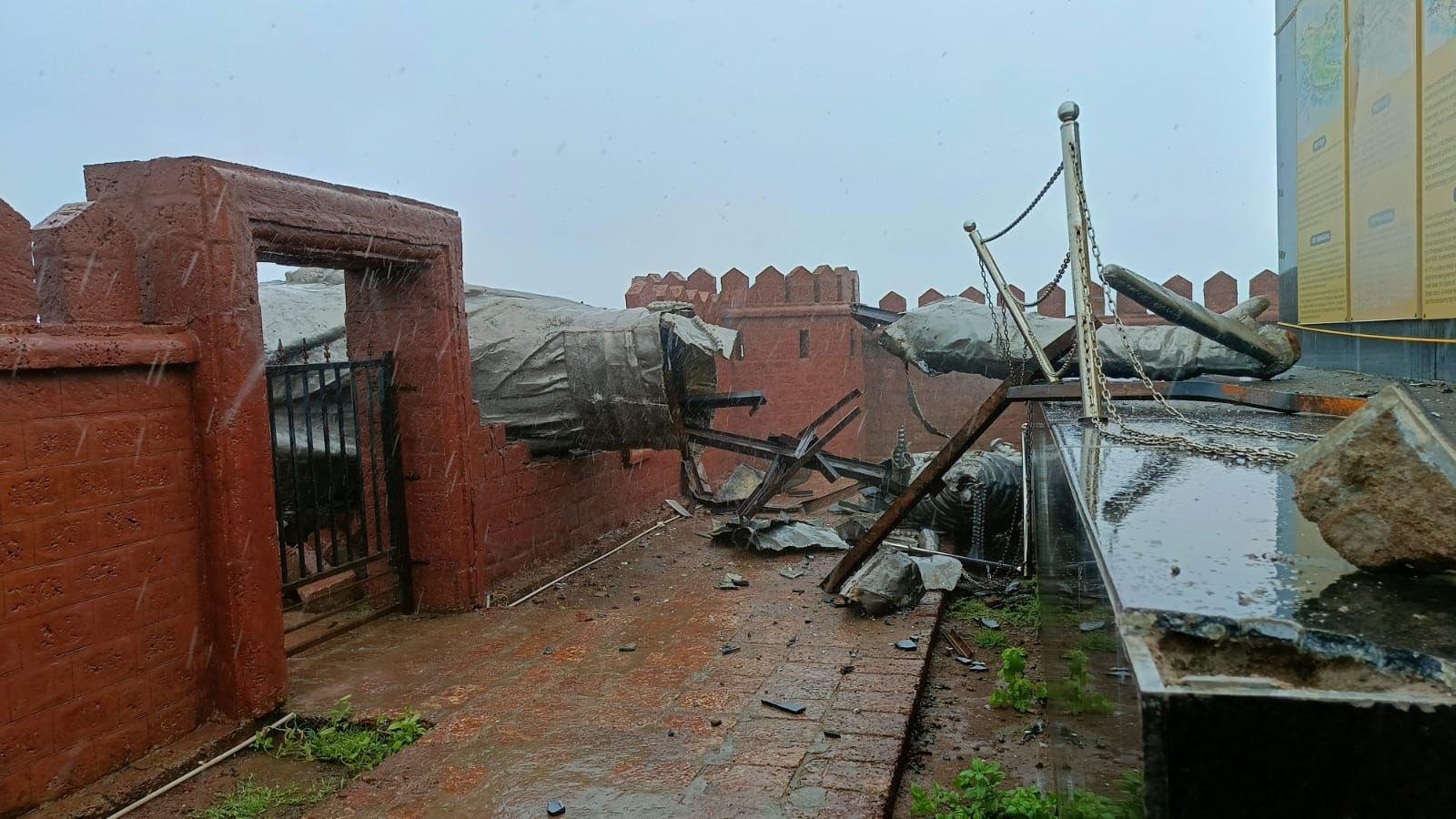Corroded nuts and bolts likely contributed to the collapse of the Shivaji statue by causing a failure in steel members forming the frame inside the statue, according to a structural engineer.
"Ankles' of a statue, where the weight of the entire structure comes to rest upon, are most critical for stability and hence, require special attention during the design stage," said Amresh Kumar, a structural engineer with a consultancy.
On Monday afternoon, the 35-foot statue of Chhatrapati Shivaji Maharaj, the Maratha warrior king, collapsed.
The statue, built by the Indian Navy, was unveiled by Prime Minister Narendra Modi at the Rajkot fort in Maharashtra's coastal Sindhudurg district about eight months back.
While officials have claimed that winds blowing at speeds of 45 kilometres an hour caused the collapse, wind speeds up to almost three times these are accounted for while designing a structure, according to the Bureau of Indian Standards.
In this statue's case, external factors such as loads or climatic conditions do not appear to have caused trouble. Rather, corrosion in the nuts and bolts, as mentioned in the PWD report, could have caused a failure of steel members making up the frame inside the statue, Kumar told PTI.
On August 20, an assistant engineer at the Maharashtra Public Works Department (PWD) had written to Naval commander Abhishek Karbhari, Area Coastal Security Officer and Area Civil-Military Liaison Officer, pointing out that the nuts and bolts used in fixing the statue on the fort were catching rust because of exposure to ocean winds and rains.
